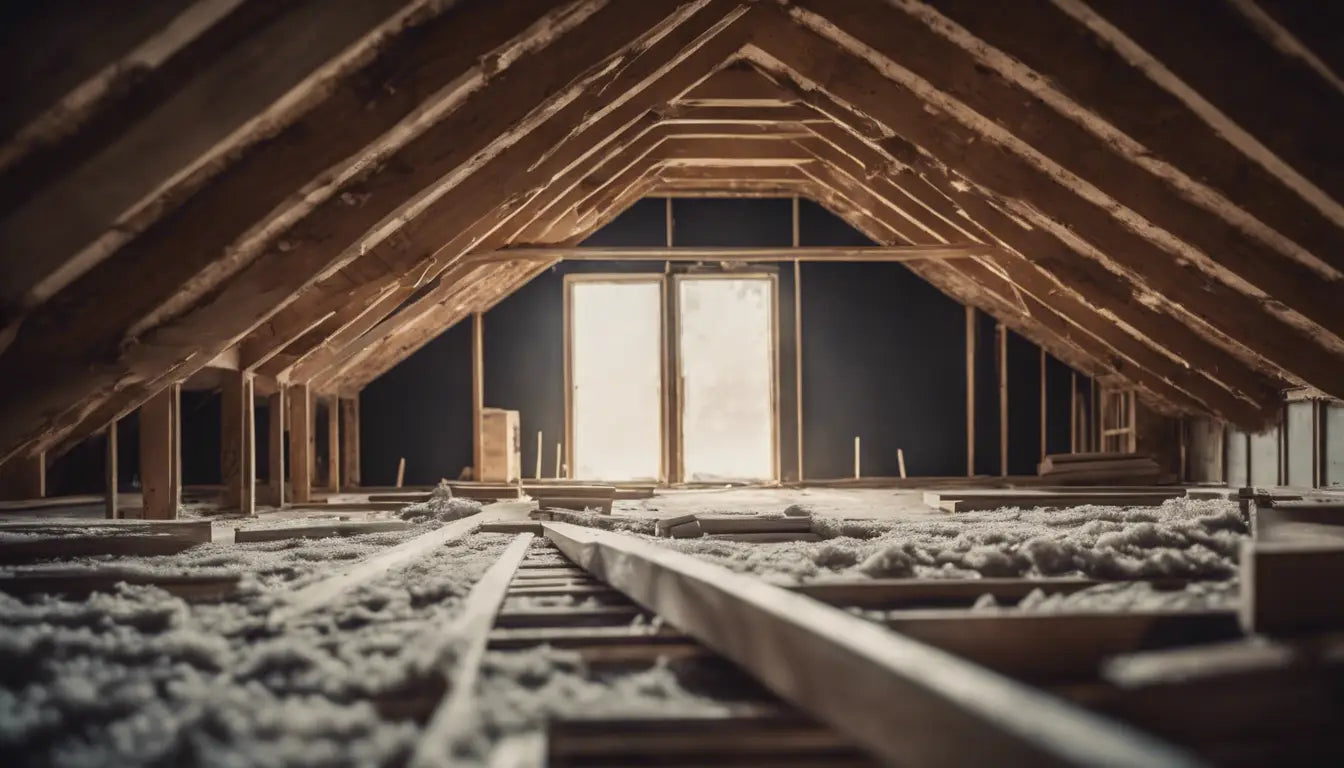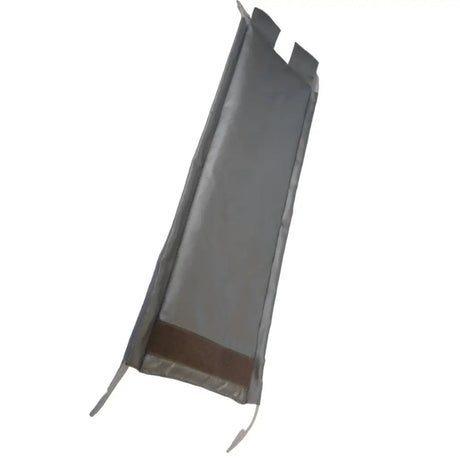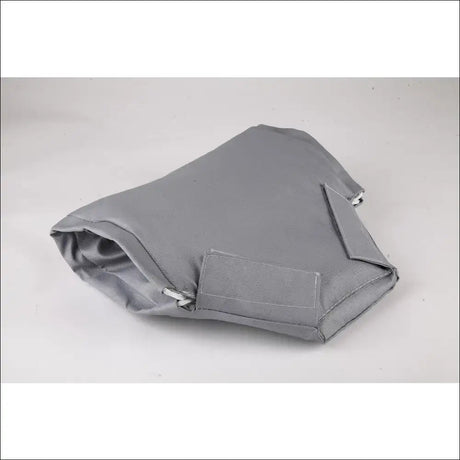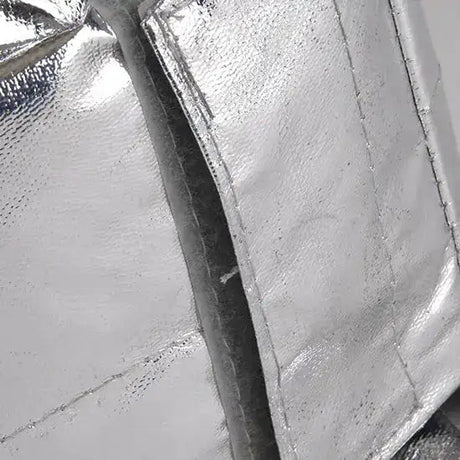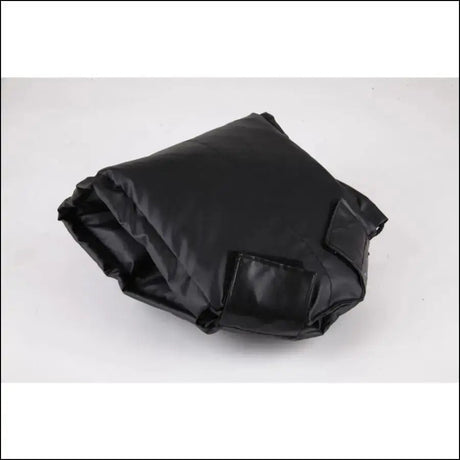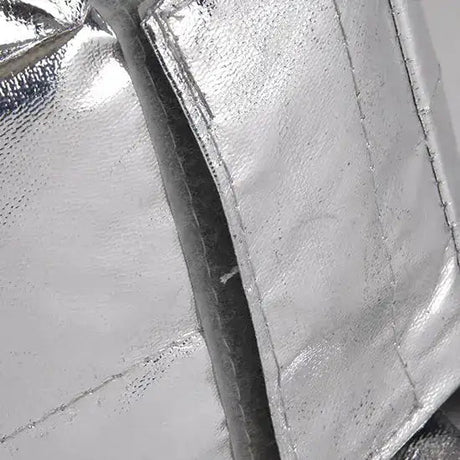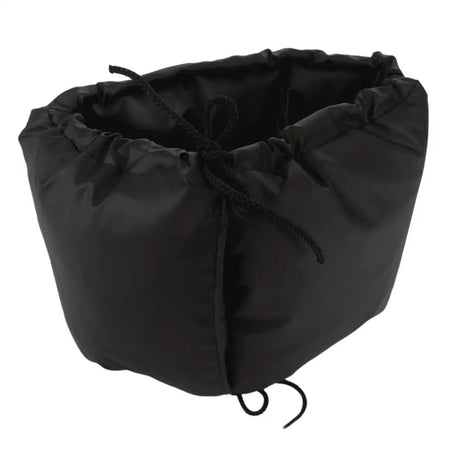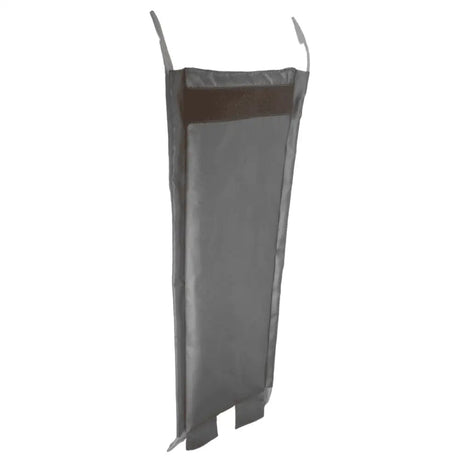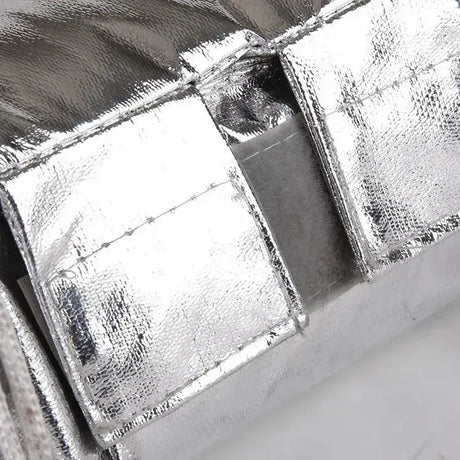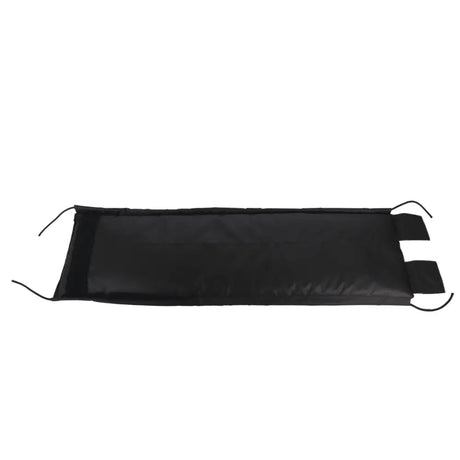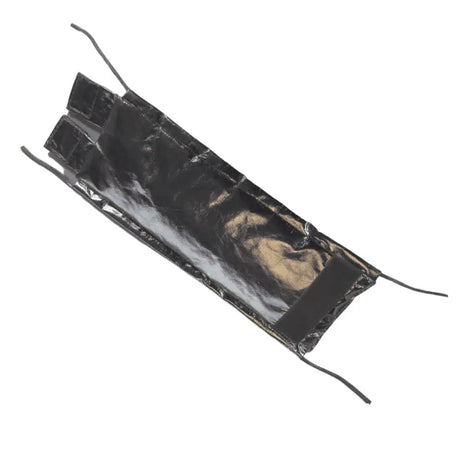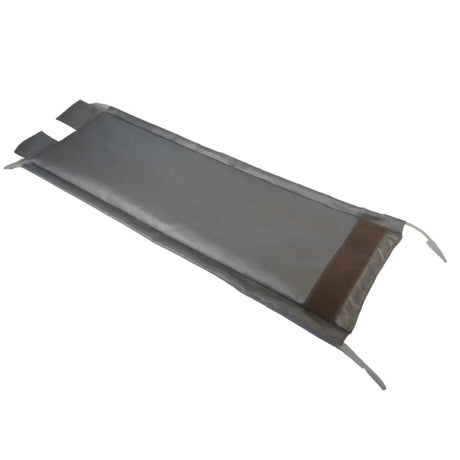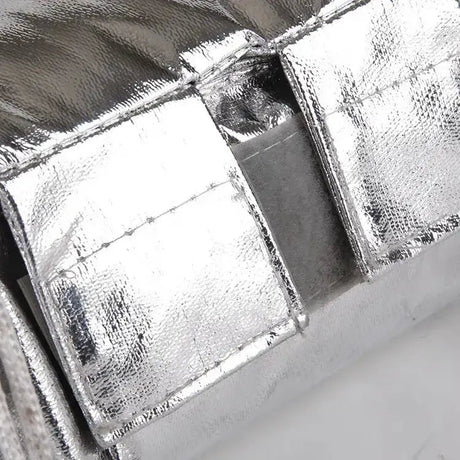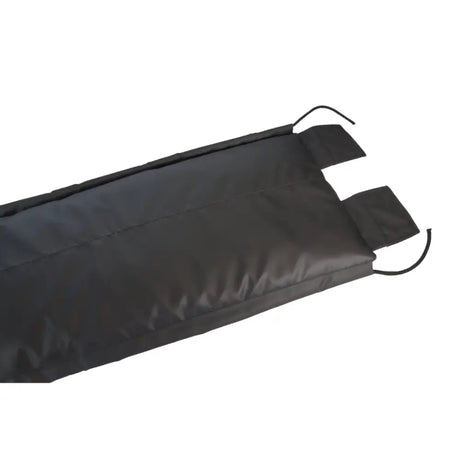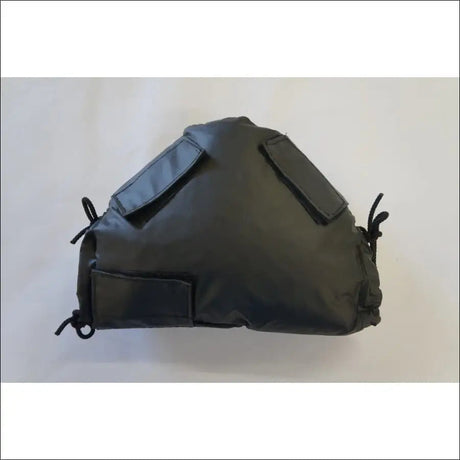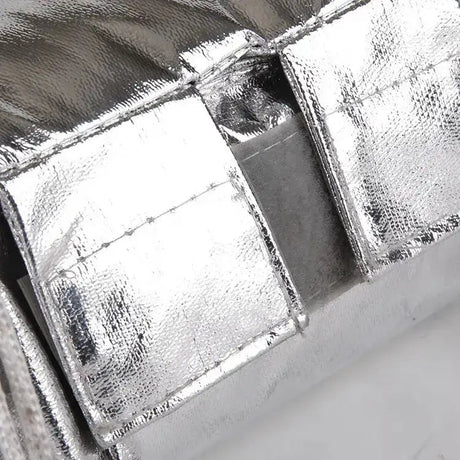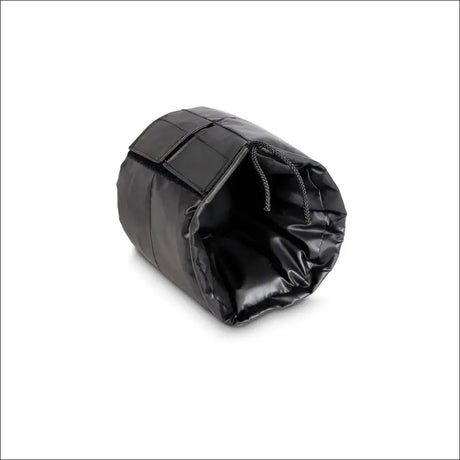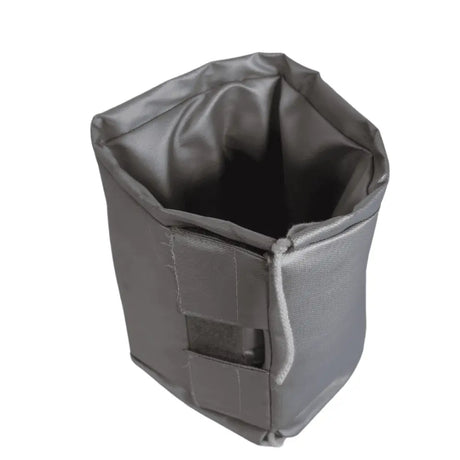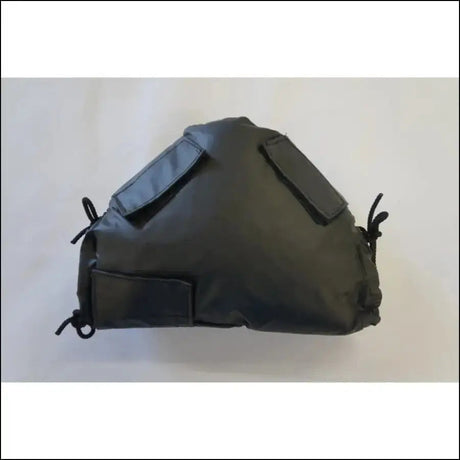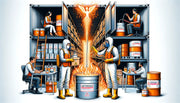As we navigate the world of construction and home improvements, our team is consistently asked about the materials that provide the best balance of performance, affordability, and safety. One such material that always springs to mind is fiberglass. Known for its myriad of benefits, the uses of fiberglass span across multiple industries, making it a stalwart in our toolkit. Today, we wish to share our insights on when and why you should consider this versatile material for your projects, always emphasizing the importance of safety in using fiberglass.
Key Takeaways
- Fiberglass benefits include high strength-to-weight ratio and insulation properties.
- Uses of fiberglass range from residential insulation to industrial applications.
- It's essential to employ safety precautions when handling fiberglass materials.
- Choosing fiberglass can be a cost-effective and durable option for many projects.
- Understanding when to use fiberglass is key to leveraging its unique advantages.
An Introduction to Fiberglass Materials
The word 'fiberglass' often surfaces in discussions about construction, insulation, and even boatbuilding. Our journey in understanding fiberglass begins with an exploration of what exactly this material comprises. Derived from very fine fibers of glass and often used as a reinforcing agent for many polymer products, the initial development of fiberglass marked a turning point in material technology. Its lightweight yet robust nature has secured its role in a plethora of applications – from household insulation to automotive body parts. As we unpack the story of fiberglass, we illuminate the nuances of its evolution and enduring utility in a variety of sectors.
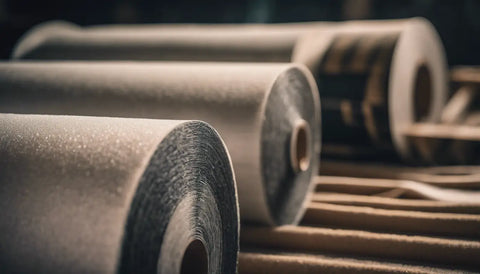
First introduced in the late 1930s, fiberglass was a serendipitous discovery that led to the production of insulation with exceptional thermal properties. Since then, technological advancements have significantly diversified its usages, cementing its status as an invaluable industrial and domestic resource. By weaving through its history and the myriad ways that fiberglass has been adopted, we not only pay homage to its legacy but also build a foundational knowledge that reinforces our forthcoming discussions.
At its core, fiberglass is celebrated for its strength and safety, a staple in any savvy constructor's repertoire. The inception of fiberglass can be traced back to its uncomplicated formula – thin strands of glass woven together to form an intricate but sturdy framework, often set within a resinous matrix to create composite materials. Below is a detailed look at the overarching benefits that have propelled fiberglass to the forefront of material choices across industries:
- Durability: Withstanding a high degree of wear and tear, fiberglass is favoured for its longevity.
- Lightweight: A high strength-to-weight ratio makes it a prime option where weight is a concern.
- Insulation: Renowned for its thermal efficiency, it’s a first-rate insulator for both heat and sound.
- Cost-effective: Compared to other materials with similar properties, fiberglass often emerges as the economical choice.
- Design Flexibility: Malleable in manufacturing, it can be shaped and formed to meet various specification needs.
In essence, the journey into the world of fiberglass is an enlightening narrative of innovation and application.
By the end of this section, our goal is to have shed light on not just the 'what' but also the 'how' and 'why' of fiberglass in ways that resonate and bolster your comprehension. Stay tuned as we delve deeper into the composition, manufacturing process, and forms of fiberglass, aiming to equip you with a holistic understanding of this transformative material.
What is Fiberglass: Understanding the Composition
Delving into the world of construction and material science, we often encounter fiberglass as a fundamental component. But what precisely constitutes fiberglass composition? Essentially, the material consists of numerous tiny glass fibers, which, when bound together, create an immensely versatile composite. As we uncover the layers that make up fiberglass, we'll provide you with a comprehensive view of its ingredients and the intricate fiberglass manufacturing process that transforms simple elements into this omnipresent material.
Ingredients and the Manufacturing Process
We begin at the very source: the ingredients. Fiberglass is birthed from a blend of natural minerals, including silica sand, limestone, and other chemical compounds, which undergo a rigorous manufacturing process. This process involves melting these minerals at extremely high temperatures until they become molten glass. The molten glass is then extruded through fine nozzles, producing thin strands, which are subsequently woven together to form fiberglass. This method ensures consistent quality and gives fiberglass the renowned strength and flexibility it is known for.
- Melt and Fiberise: Transforming raw materials into fine glass fibers.
- Binding: Combining fibers with various resins to enhance their properties.
- Curing: Applying heat to harden the composite into its final form.
Types and Forms of Fiberglass Products
Fiberglass serves myriad purposes, largely due to its adaptability in various forms. The major types of fiberglass include E-glass, which is predominantly used in reinforcements, and S-glass, known for its higher strength. These types can be further processed into different fiberglass forms, catering to an expansive range of applications. Here's a look at some of the most prevalent fiberglass forms:
| Fiberglass Form | Description | Primary Use |
|---|---|---|
| Chopped Strand Mat (CSM) | Randomly arranged fiberglass strands bonded by a resin or powder. | Laminates, roofing, boat hulls. |
| Woven Roving | Heavier fabric with interwoven strands, offering high strength. | Vehicle panels, sporting goods. |
| Fiberglass Cloth | Lightweight fabric with a tight weave for a smooth finish. | Aerospace, electronic circuit boards. |
| Continuous Roving | Continuous fiberglass strands used to produce roving yarns or mats. | Pultruded profiles, wind turbine blades. |
Each product is tailored to specific project needs and has been significant in advancing technology across various sectors. By now, our hope is that you have a richer perspective on the intricate framework of fiberglass, fully appreciating its manufacturing subtleties and structural permutations.
Key Properties of Fiberglass
In our analysis of materials, the durability of fiberglass shines through as a primary trait. It steadfastly endures the relentless march of time and weather, making it an excellent choice for both construction and manufacturing. Not only does it withstand physical stressors, but it also holds its own when it comes to its fiberglass thermal properties. Its capacity to insulate against extreme temperatures is not just impressive; it's a defining characteristic in the material's broad adoption.
Let us delve into the specifics of these properties, starting with durability. Fiberglass is remarkably robust against the forces of corrosion and wear. Even in the face of harsh environmental conditions, it maintains its integrity without substantial degradation. The longevity of fiberglass-made objects is a testament to this very attribute, which is highly sought after in the realms of architecture and product design alike.
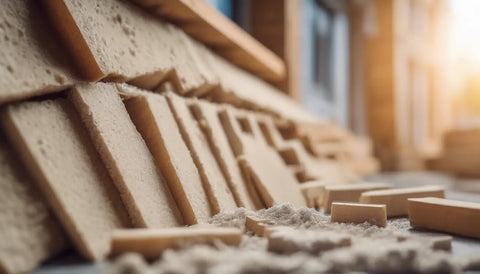
When it comes to thermal efficiency, fiberglass acts as a steadfast barrier, slowing the transfer of heat and thereby proving its merit as excellent insulation. In the chill of winter or the blaze of summer, fiberglass contributes significantly to maintaining ambient temperatures within structures – a boon for both comfort and energy consumption.
Yet another vital aspect for consideration is the flammability of materials. Here, fiberglass claims an advantage, for its composition inherently resists flames. This fire-retardant quality makes fiberglass a safer option, particularly in scenarios where fire risk is a genuine concern.
To illustrate the contrast between durability, thermal properties, and flammability of fiberglass in comparison to other materials, we present the following table:
| Property | Fiberglass | Other Common Materials |
|---|---|---|
| Durability | Highly durable, corrosion-resistant | Variable, depending on material |
| Insulation Efficiency | Excellent thermal resistance | Ranges from poor to good |
| Flammability | Low flammability | Can vary from high to low |
In this introspective view of fiberglass, the overarching theme is clear: its durability, thermal properties, and flammability ratings play a pivotal role in its broad utility and overall safety. Whether it's employed in constructing energy-efficient homes or fabricating durable goods, fiberglass stands out as an exemplar in the materials world.
Applications: Where is Fiberglass Used?
At this juncture, we're diving into the various realms where the application of fiberglass has set a benchmark. Notably, its role in the construction sphere is vast and critical. As we further explore, we'll highlight significant uses, benefits, and case studies where fiberglass stands out, emphasising how integral this material is to modern infrastructure and energy efficiency.
Fiberglass Insulation and its Benefits
Fiberglass insulation has become a household name, and rightly so. It's known for its remarkable capacity to reduce energy transfer, thereby facilitating optimal thermal regulation in buildings. This attribute not only ensures comfort but also results in energy conservation, cutting down on heating and cooling expenses. Moreover, fiberglass is non-combustible, adding an extra layer of safety against fire hazards. Its application in attics, walls, and floors as insulation proves to be a cost-efficient approach that doesn't compromise on performance.
Uses in the Construction Industry
The construction industry exploits the utilitarian nature of fiberglass on multiple levels. From residential to commercial infrastructure, the material's lightness combined with its strength makes it an ideal choice for a multitude of construction needs. It’s used in the fabrication of roofing sheets, door frames, and window profiles, where longevity and resistance to the elements are paramount. Additionally, composite panels utilising fiberglass are rapidly becoming a standard for constructing energy-efficient buildings.
Fiberglass Pipe Insulation: A Case Study
Fiberglass pipe insulation serves as an exemplary case study, demonstrating the material’s prowess in specialised applications. Pipes, being central to any building's heating and cooling system, necessitate materials that can withstand extreme temperatures while impeding thermal exchange. Fiberglass pipe insulation is adept at this, ensuring systems operate efficiently and are safeguarded against the perils of condensation and freeze-thaw cycles. Below, we provide a comparative table showcasing fibreglass's performance in pipe insulation against other common insulating materials.
| Material | Thermal Conductivity | Moisture Absorption | Durability |
|---|---|---|---|
| Fiberglass | Low | Minimal | Excellent |
| Rock Wool | Low to Moderate | Low | Good |
| Polystyrene | Low | High | Poor to Good |
| Polyethylene Foam | Moderate | Low | Excellent |
In summary, our foray into the world of fiberglass application reveals that its integration into the fabric of modern infrastructure is undeniable. From offering premier insulation solutions to reinforcing the very bones of buildings, fiberglass is a cornerstone in construction. By assessing the construction industry uses, including the focused study on fiberglass pipe insulation, we affirm the indispensability of this material in current-day construction and maintenance.
Fiberglass Compared to Other Materials
When considering insulation choices, it's essential to weigh up the merits and drawbacks of various materials. Fiberglass is often pitted against a range of alternative insulation materials, each with distinctive features and benefits. Let’s explore these comparisons, focusing particularly on the once-common asbestos, and discern where fiberglass slots in the hierarchy of materials.
To put things into perspective, asbestos was a widely used material known for its durability and heat resistance. However, its profound health risks, particularly respiratory diseases like asbestosis and mesothelioma, led to its decline in popularity. In contrast, fiberglass offers a safer alternative whilst retaining the qualities that made asbestos favourable for insulation.
Why choose fiberglass over other materials? One of the critical factors is safety. Unlike asbestos, fiberglass does not contain fibres that can become airborne and damage lung tissue when inhaled. Moreover, advancements in manufacturing have yielded high-quality fiberglass that minimises irritation and makes handling safer than in the past.
But how does fiberglass measure against other modern, alternative insulation materials? Here’s a table where we compare fiberglass to popular insulation counterparts, assessing properties such as thermal efficiency, flammability, and durability:
| Material | Thermal Efficiency | Flammability | Durability | Environmental Impact |
|---|---|---|---|---|
| Fiberglass | High | Low | High | Moderate |
| Rock Wool | High | Low | Good | Low |
| Cellulose | Moderate | High | Moderate | Low |
| Polystyrene | Varies | Varies | Low to Moderate | High |
Moving beyond the asbestos comparison, the choice becomes less clear-cut. Each type of insulation material boasts its own array of benefits: for instance, rock wool is durable and has excellent thermal efficiency, while cellulose is favoured for its eco-friendly credentials. However, when considering the balance of safety, efficiency, and durability, fiberglass often emerges as the material of choice.
Our cumulative knowledge and experience suggest that while there are multiple viable alternative insulation materials on the market, fiberglass strikes a balance that few can match. It's a testament to both our evolving understanding of material science and our commitment to indoor air quality and overall building safety. Whether renovating a historic property or constructing a modern eco-home, fiberglass insulation remains a sound choice, reflecting both our pragmatic and ecological sensibilities.
Understanding R-Value in Fiberglass Insulation
As advocates for optimal home and building efficiency, we recognise the pivotal role of insulation in maintaining a comfortable, energy-conserving environment. An essential component in this regard is the R-value in insulation, a measure that is often mentioned but perhaps not always fully understood. Let’s demystify the concept and its significant impact on energy efficiency, as well as the implications for heating and cooling costs.
What is R-Value and Why It Matters
R-value is the standard metric for assessing an insulation material's resistance to heat flow. The higher the R-value, the greater the insulation's effectiveness. When it comes to fiberglass insulation – a popular choice in the UK – assessing its R-value becomes critical for ensuring maximal thermal efficiency. A high R-value in fiberglass translates to superior energy-saving benefits, effectively retaining warmth during the winter and cool air in the summer, thereby streamlining heating and cooling costs for homeowners. It is, therefore, a decisive factor in not only enhancing comfort but also in promoting substantial energy savings over time.
Maximising Energy Efficiency with Proper Insulation
To maximise the energy efficiency of any living space, proper insulation must be a foremost consideration. Fiberglass, with its versatile R-value range, allows for customisation in accordance with the varying needs of different building types and climatic conditions. Employing the appropriate R-value in insulation can lead to significant reductions in heating and cooling costs. Moreover, it is a commitment to environmental stewardship, lessening the reliance on energy-consuming heating and cooling systems.
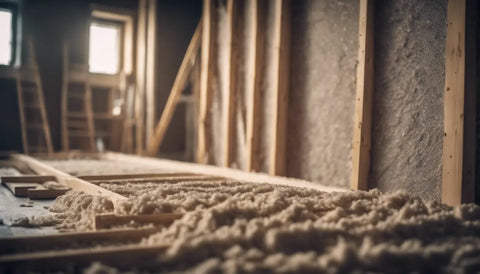
Here are practical tips to enhance energy efficiency through proper insulation:
- Selecting the correct R-value for your specific location and building requirements.
- Ensuring that the insulation is correctly installed, as gaps and compression can diminish its efficacy.
- Considering the entire building envelope, including walls, ceilings, floors, and roofs, to create a comprehensive thermal barrier.
- Regularly reviewing and upgrading insulation to address any deteriorating areas or adapting to new energy standards.
We encourage you to view insulation as an investment in your property's future, where the upfront costs are far outweighed by the long-term savings. By prioritising a high R-value in your insulation choice, particularly with fiberglass, you're not just cutting costs; you're embracing a lifestyle centred around efficiency and responsibility. Together, let’s forge the path towards a more energy-efficient future.
Fiberglass Safety Concerns
As responsible professionals and advocates for best practices within the construction and insulation industries, we're acutely aware of the fiberglass safety concerns that arise from its use. Our commitment to promoting safe working environments compels us to highlight the importance of handling fiberglass with due care. The tiny glass fibers that make up the material can cause irritation to the skin, eyes, and respiratory system if not managed correctly. In view of this, we understand and emphasise the significance of implementing protective measures to mitigate any potential health implications.
Fiberglass, while beneficial in many applications, does pose risks when exposed to it without proper precautions. Consequently, to ensure the safety and well-being of individuals who interact with this material, we present a set of guidelines that should always be adhered to:
- Always wear protective clothing to cover exposed skin, including long-sleeved shirts and trousers.
- Use gloves to prevent direct contact with the skin and reduce the risk of irritation or cuts.
- Equip oneself with safety goggles to protect eyes from potential fiber penetration.
- Wear a dust mask or respirator to prevent inhalation of airborne fibers.
- Keep the work area well-ventilated to disperse fibers in the air.
- After handling fiberglass, wash exposed skin with cold water to reduce the risk of fibers becoming embedded.
- Never rub the eyes or skin if fiberglass particles come into contact, as this can embed the fibers and worsen irritation.
- Clean the work area with a vacuum equipped with a HEPA filter to ensure all residual fibers are removed.
We must remain vigilant regarding the potential for long-term health effects if exposed repeatedly to fiberglass without sufficient protection. Issues can range from temporary skin and eye irritation to more serious respiratory problems if safety practices are ignored. Therefore, investing in the correct safety equipment and adopting a rigid protocol for handling fiberglass is not just recommended, it is imperative.
To offer a comprehensive understanding of the steps to be taken for safe fiberglass use, the below table summarises key aspects of the protective measures recommended:
| Protective Measure | Description | Purpose |
|---|---|---|
| Protective Clothing | Full coverage garments, including overalls or similar | To prevent fiberglass fibers from contacting skin |
| Gloves | Durable, ideally nitrile or heavy-duty fabric gloves | To protect hands during handling and installation |
| Safety Goggles | Tightly fitting eye protection | To prevent fibers from entering the eyes |
| Respiratory Protection | Dust masks or respirators rated for fiberglass | To filter out airborne fibers and prevent inhalation |
| Ventilation | Adequate air flow or extraction systems | To disperse fibers and maintain air quality |
| Skin Care | Cold water wash post-exposure | To remove fibers from skin and minimise irritation |
| Cleaning | Use of HEPA filter vacuum | To fully remove fibers from the work area |
By embodying a culture of safety and implementing these measures effectively, we can continue to harness the benefits of fiberglass while ensuring the health and safety of all users. Responsibly managing the risks associated with fiberglass is not just a regulatory requirement; it reflects our dedication to the trades and crafts we so passionately support.
Alternatives to Fiberglass
Recognising the importance of eco-friendly and health-conscious choices in construction, we cast our lens on meaningful fiberglass alternatives. These substitutes not only provide sustainable insulation options but also take into account broader ecological concerns. The materials we'll discuss exhibit a blend of innovative features and environmental benefits, often matching or exceeding fiberglass in certain applications. Let's delve into some of these alternative materials and their respective attributes.

First on the list is cellulose insulation, which is made predominantly from recycled paper products. A key advantage of cellulose is its low-impact manufacturing process, making it a hit among those who are keen on reducing carbon footprints. Furthermore, it's often treated with non-toxic borate additives for fire and pest resistance, positioning it as a sustainable insulation choice for eco-conscious individuals and professionals alike.
Another frontline contender as a sustainable insulation material is mineral wool, also known as rock or slag wool. This insulation type is derived from natural rock or industrial waste, thereby recycling a material that would otherwise contribute to landfill. Its high-temperature resistance and sound absorption abilities make it a versatile alternative to fiberglass, well-suited for a variety of building contexts.
Sheep's wool is also drawing attention for its natural insulating properties, moisture control, and fire resistance – all without the use of potentially harmful chemicals. While typically more expensive, its exceptional ecological credentials qualify it as a top-tier alternative, especially for projects where sustainable building practices are paramount.
Let's not overlook cork as a viable player in the arena of ecological building materials. Harvested from the bark of cork oak trees without causing harm to the tree itself, cork insulation offers both thermal and acoustic benefits. Its natural fire resistance and ability to be composted at the end of its life span make it an attractive option for those dedicated to environmental sustainability.
- Eco-friendly and health-conscious choices in construction are vital.
- Materials like cellulose, mineral wool, and sheep's wool are sustainable alternatives to fiberglass.
- These options provide comparable benefits in insulation, soundproofing, and fire resistance.
Finally, advancements in technology have given birth to products like polyisocyanurate foam, or polyiso for short. This rigid foam board insulation is noted for its high R-value per inch, which denotes its efficiency in insulating against heat loss. While all insulation materials have their pros and cons, polyiso stands out due to its low ozone depletion potential and its utilisation of hydrochlorofluorocarbon-free foam blowing agents, making it a more environmentally conscious selection.
While each of these fiberglass alternatives has its own set of advantages and potential drawbacks, their commonality lies in their shared commitment to sustainability and user safety. Every alternative is a leap towards greener, ecological building materials. It behoves us all to consider these alternatives when planning our next construction or home improvement project.
Conclusion
As we have traversed the ins and outs of fiberglass, our purpose has been to equip you with a thorough comprehension of its properties, uses, and safety. Our exploration into fiberglass has revealed its extensive applications, from insulation in domestic residences to its relevance in industry sectors. We've observed its attributes of durability, insulation efficiency and design flexibility. In terms of recommendations, we advise assessing the specific requirements of your project to determine the appropriate form of fiberglass and if fiberglass is the right choice in the first place. Whether it's chopped strand mat for marine applications or continuous roving for wind turbine blades, the strength and versatility of fiberglass make it a commendable candidate for a myriad of uses.
Final Thoughts: Deciding If Fiberglass is Right for You
Choosing fiberglass is a decision that hinges on various factors, ranging from environmental conditions to safety considerations. Although the assessment may seem daunting, we are here to simplify the process. It's imperative to weigh the unique needs of your project against the qualities of fiberglass. If thermal efficiency, durability and cost-effectiveness feature high on your list, then fiberglass emerges as a frontrunner. However, should sustainability and ecological impact be your guiding principles, then exploring alternatives to fiberglass might serve you better. It's a matter of aligning your objectives with the right material solutions.
FAQ
What are the main benefits of using fiberglass?
The main benefits of using fiberglass include its excellent thermal insulation properties, its relative affordability, and its durability. It’s widely used in various industries due to its light weight combined with its strength, which makes it a versatile choice for many applications, including construction and automotive.
Is fiberglass safe to use?
Yes, fiberglass is generally safe to use when proper safety precautions are followed. It’s important to handle fiberglass with care, using protective clothing to avoid skin irritation, and to ensure that spaces where fiberglass is installed are well ventilated to prevent respiratory issues. While fiberglass doesn't pose the same health risks as asbestos, it’s still vital to minimise direct exposure during installation or handling.
How does fiberglass compare to asbestos in terms of safety?
Fiberglass is considered much safer than asbestos. Asbestos has been linked to serious health conditions, including lung cancer and mesothelioma. Consequently, it has largely been phased out in construction and insulation. Fiberglass, while it can cause temporary skin, eye, and throat irritation, doesn't carry the same long-term risks as asbestos when handled with the correct protective measures.
What are the uses of fiberglass in the construction industry?
In the construction industry, uses of fiberglass include insulation for walls, roofs, and pipes, which improves energy efficiency in buildings. Furthermore, it’s used in the manufacturing of roofing sheets, shower stalls, and as a reinforcing material for many products including concrete, plastics, and ceramics.
What is the manufacturing process for fiberglass?
The manufacturing process for fiberglass typically involves melting raw materials like silica sand at high temperatures, extruding them through fine holes to create thin fibers, and then binding these fibers with a resin. The resulting material is shaped or spun into mats, cloths, or used to create various forms like loose-fill insulation or duct boards.
How does fiberglass insulation contribute to energy efficiency in homes?
Fiberglass insulation has high thermal resistance or “R-value”, meaning it’s effective in reducing heat transfer. This helps maintain a building's temperature by keeping warm air inside during winter and hot air outside during summer, thus reducing the reliance on heating and cooling systems and, consequently, the energy costs.
Are there environmentally friendly alternatives to fiberglass?
Yes, there are several alternatives to fiberglass that are more eco-friendly. These include materials like cellulose, which is made from recycled paper, sheep's wool, which is natural and sustainable, and polystyrene, a type of foam insulation. These materials provide options for those who are looking for sustainable or potentially less irritating insulation solutions.
Can fiberglass be recycled?
Recycling fiberglass can be challenging due to its composition and the fact that it is often contaminated with other materials. While research and development into recycling methods are ongoing, currently, there aren’t widely established systems for recycling fiberglass. However, repurposing and reusing fiberglass products are possible.
What factors should be considered when choosing fiberglass for a project?
When choosing fiberglass for a project, factors such as the intended application, the required R-value for optimal insulation, the level of exposure to flame and high temperatures (considering its flammability rating), and any specific safety or health concerns should all be considered. Cost and the environmental impact of the material may also influence the decision-making process.
What protective measures should be taken when handling fiberglass?
When handling fiberglass, it’s recommended to wear long-sleeved clothing, gloves, goggles, and a dust mask to prevent irritation of the skin, eyes, and respiratory system. Working in a well-ventilated area and washing hands thoroughly after handling the material are also important to ensure safety.

